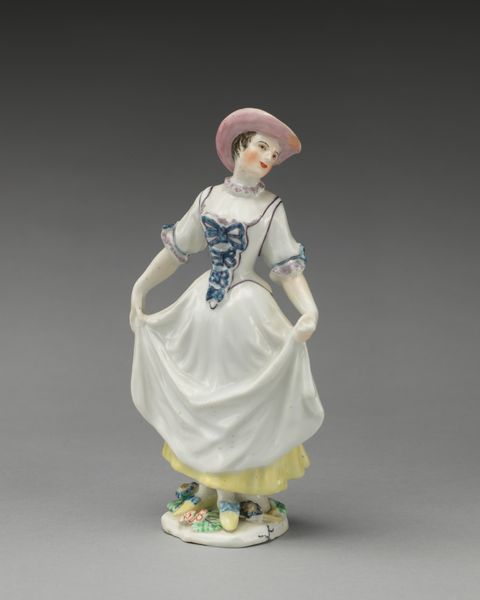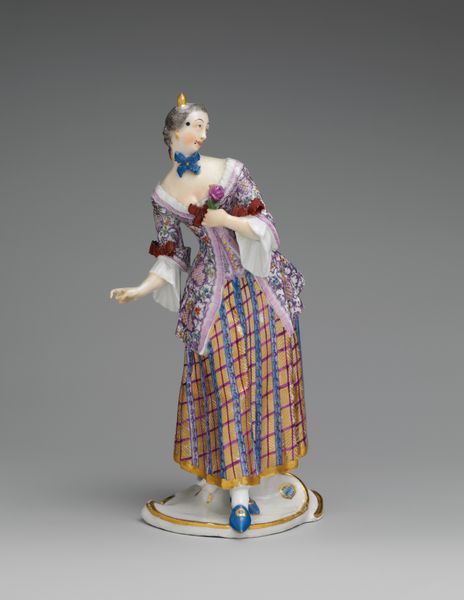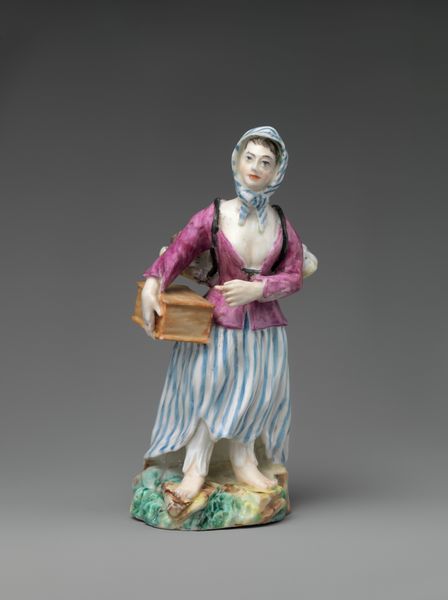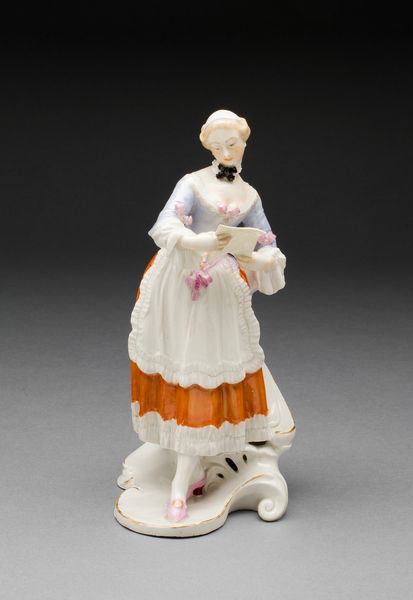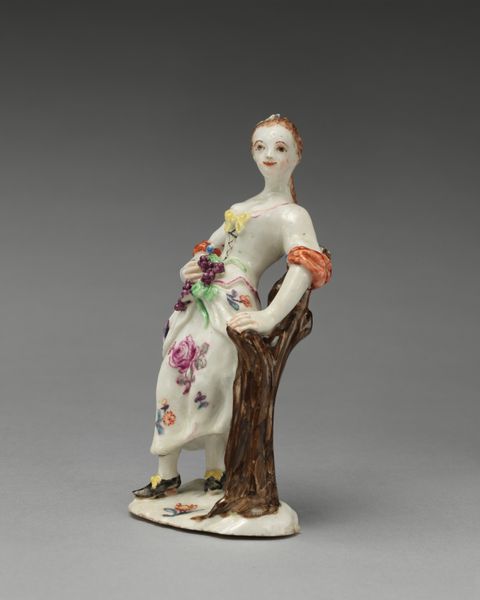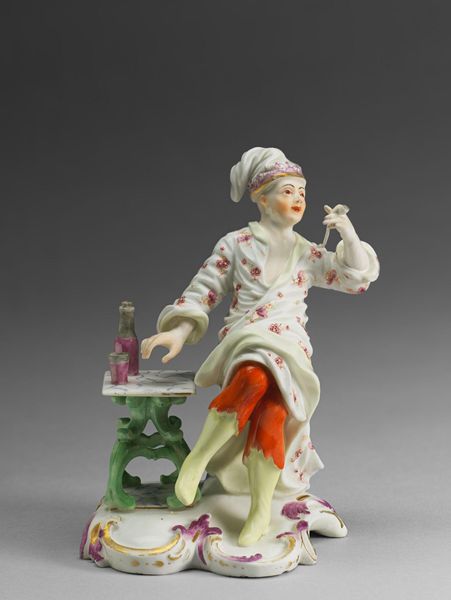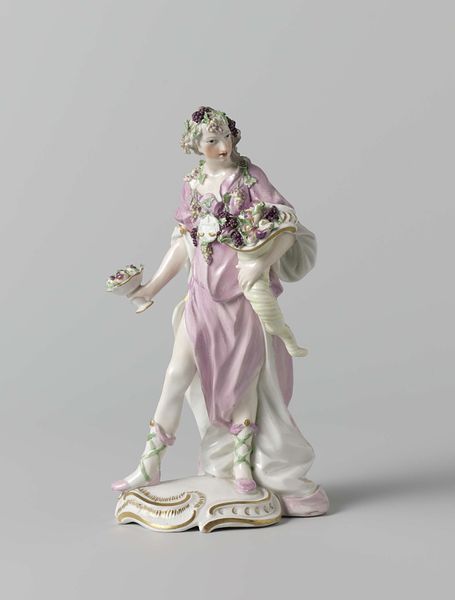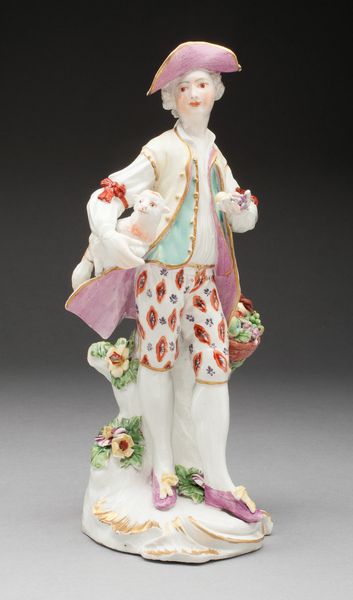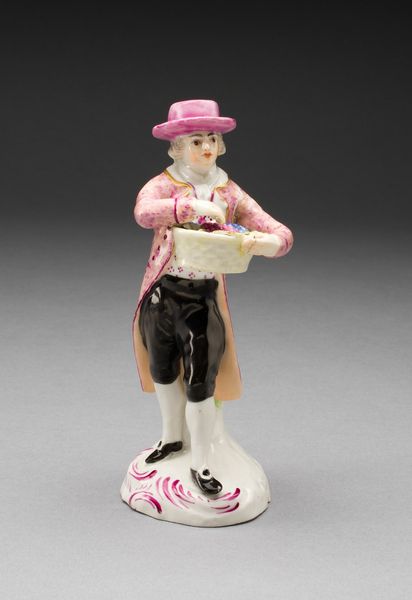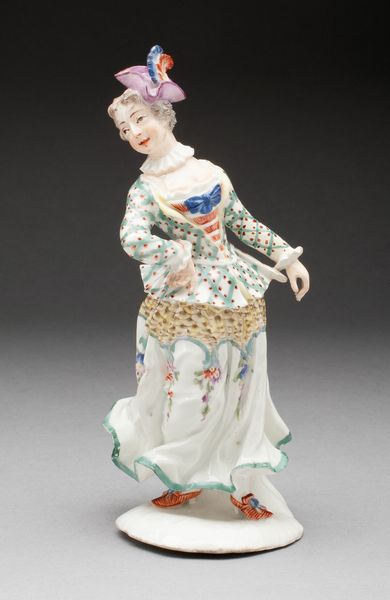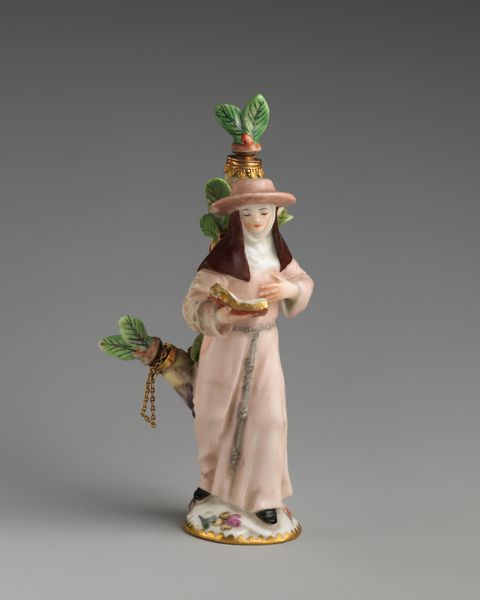
Dimensions: H. 13.7 cm (5 3/8 in.)
Copyright: Public Domain
This small porcelain figure of a girl, holding a bowl of flowers, was made at the Limbach factory in Germany. Porcelain, often called ‘white gold’, was highly prized and was used for tableware and figurines. Porcelain is made by combining kaolin clay with other materials at extremely high temperatures, a process invented in Europe in the early 18th century. The techniques required to produce porcelain like this were closely guarded secrets, making the Limbach factory's production all the more impressive. The figure's delicate form and painted details speak to the precision and skill of the artisans who made it. The pastel palette, fashionable dress, and charming subject matter reflect the refined tastes of the time. Objects like this were made in multiple parts from molds, then assembled, and painted. It was a complex division of labor. The figurine represents the industrialization of ceramics, which made luxury items more accessible to a growing middle class. Appreciating the history of its making allows us to fully appreciate the social and economic context that shaped this object.
Comments
No comments
Be the first to comment and join the conversation on the ultimate creative platform.


